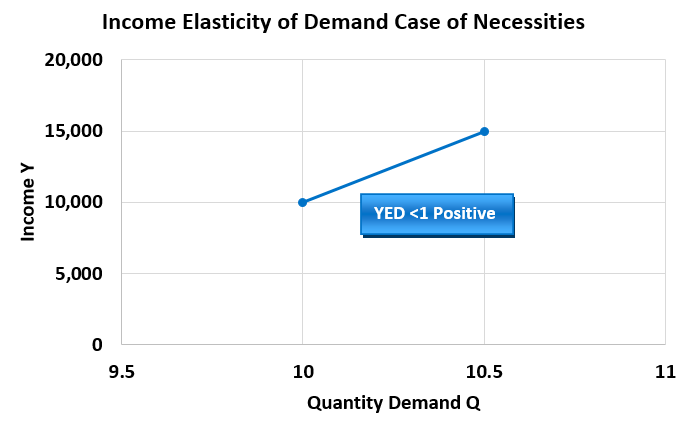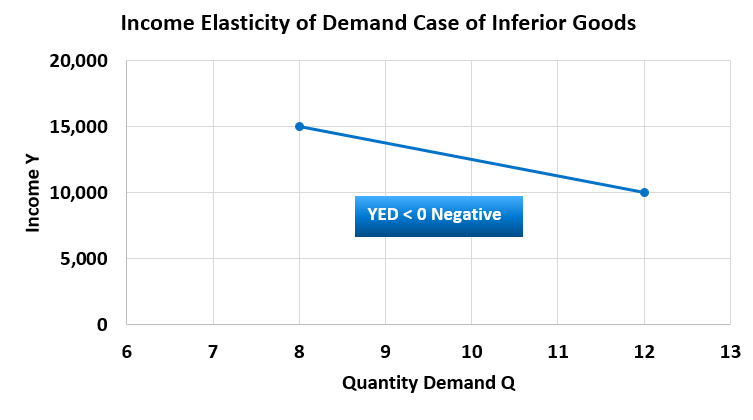Income Elasticity of Demand, Cross Elasticity of Demand explores two critical concepts in economics that explain how demand for goods and services responds to changes in income levels and the prices of related products. This blog post breaks down the definitions, significance, and formulas for these elasticities, supported by practical examples and insights into their real-world applications. Perfect for students and enthusiasts of economics, it offers a clear understanding of these demand dynamics and their implications for businesses and policymakers. This topic is equally important for the students of economics across all the major Boards and Universities such as FBISE, BISERWP, BISELHR, MU, DU, PU, NCERT, CBSE & others & across all the business & finance disciplines.
Table of Contents
Income Elasticity of Demand, Cross Elasticity of Demand
Income Elasticity of Demand YED
Income elasticity of demand measures the ratio of change in demand with respect to change in income whereas price remains constant. Its formula is given below:
![]()
![]()
![]()
![]()
Types of Income Elasticity of Demand
There are two types of income elasticity of demand. One is the relation with normal goods and other one is the relation with inferior goods.
Income Elasticity of Demand for Normal Goods (Positive)
Normal goods mean common consumable items. Income has positive relation with quantity demand of normal goods which means, when income increases, quantity demand of normal goods also increases or vice versa. Normal goods have further two types, necessities and comforts. In case of necessities, the YED is positive but less than 1 whereas in case of comforts YED is positive and more than 1.In both cases, demand line goes up from down left to top right. For explanation of both, the tables and diagrams are given below:
In case of Necessities (Positive) (0<YED<1)
Table Income Elasticity of Demand Case of Necessities
| Consumer’s Income Y | Quantity Demand Q kg |
| 10,000 | 10 |
| 15,000 | 10.5 |
Figure Income Elasticity of Demand Case of Necessities

![]()
![]()
Table Income Elasticity of Demand Case of Comforts
| Consumer’s Income Y | Quantity Demand Q kg |
| 10,000 | 10 |
| 12,000 | 14 |
Figure Income Elasticity of Demand Case of Comforts

![]()
![]()
Income Elasticity of Demand for Inferior Goods (Negative) (YED < 0)
Income has negative relation with quantity demand of inferior goods which means when income increases, quantity demand for inferior goods decline. In this case YED < 0. So income elasticity of demand for inferior goods is negative and in this case quantity demand line drops down from top left to right bottom. For further clarification follow table and diagram below:
Table Income Elasticity of Demand Case of Inferior Goods
| Consumer’s Income Y | Quantity Demand Q kg |
| 10,000 | 12 |
| 15,000 | 8 |
Figure Income Elasticity of Demand Case of Inferior Goods

![]()
![]()

Cross Elasticity of Demand XED
Cross elasticity of demand measures the ratio change in quantity demand of x product with respect to change in price of y product. It is denoted by XED, where:
X means Cross, E means Elasticity and D means Demand.
It has three types:
- Cross Elasticity of Demand for Substitute Goods (Positive)
- Cross Elasticity of Demand for Complementary Goods (Negative)
- Cross Elasticity of Demand for Unrelated Goods (Zero)
Its formula is given below:
![]()
![]()
![]()
![]()
![]()
1.Cross Elasticity of Demand for Substitute Goods (XED=Positive)
Two goods are considered as substitutes when they can be used as an alternative for each other so when price of a product y increases, quantity demand of product x increases because product x is a substitute of product y.
In this case, they have positive relation and their demand curve DD goes upward from left bottom to right up.
For further explanation, follow the table, diagram and calculation given below:
Table: Cross Elasticity of Demand for Substitute Goods (Positive)
| Q.D (x) | P (y) |
| 30 | 20 |
| 70 | 30 |
Figure: Cross Elasticity of Demand for Substitute Goods (Positive)

![]()
![]()
![]()
2.Cross Elasticity of Demand for Complementary Goods (XED=Negative)
Two goods are considered as complementary when they consume together or appeal of one good depends on the price of other. For example, petrol and bike are complementary so when the price of fuel increases, quantity demand of bikes decreases.
In this case, they have negative relation and their demand curve DD drops downward from top left to right bottom because of negative relation.
For further explanation, follow the table, diagram and calculation given below:
Table: Cross Elasticity of Demand for Complementary Goods (Negative)
| Q.D Bikes (x) | Price Fuel P (y) |
| 50 | 20 |
| 20 | 30 |
Figure: Cross Elasticity of Demand for Complementary Goods (Negative)

![]()
![]()
![]()
3. Cross Elasticity of Demand for Unrelated Goods (XED = Zero)
When two goods have no relation with each other they are called unrelated goods. In this case change in price of one product results no change in quantity demand of other product. For example, coffee has no relation with soap so increase in the price of coffee has no effect on the quantity demand of soap.
In this case, they have zero relation and their demand curve DD will be vertical because of no or zero relation.
For further explanation, follow the table, diagram and calculation given below:
Table: Cross Elasticity of Demand for Unrelated Goods (XED = Zero)
| Q.D Soap (x) | Price Coffee (y) |
| 30 | 10 |
| 30 | 30 |
Figure: Cross Elasticity of Demand for Unrelated Goods (XED = Zero)

![]()
![]()
![]()
Related Posts
Evolving different thoughts of Economics
2.1 Theory of Consumer Behaviour
2.2 Total Utility, Marginal Utility, Point of Satiety & Types of Utilities
2.3 The Law of Diminishing Marginal Utility DMU
2.4 The Law of Equal Marginal Utility EMU
3.1 Demand, Individual Demand, Aggregate Demand, Law of Demand
3.2 Change and Shift in Demand, Extension and Contraction in Demand, Rise and Fall in Demand






